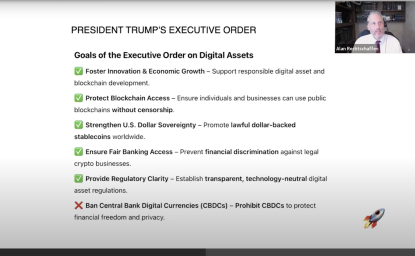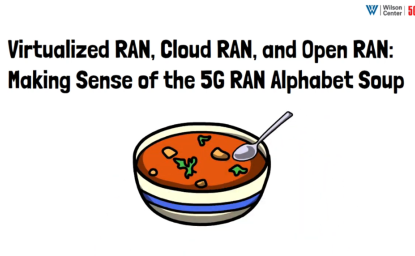WASHINGTON – On June 9th, the U.S. Senate passed the U.S. Innovation & Competition Act (S 1260). The Wilson Center's Science and Technology Innovation Program (STIP) has just released a video that demystifies the radio access network (RAN), makes sense of Open RAN and delves into the potential geopolitical implications. You can view the video, "Virtualized RAN, Cloud RAN, and Open RAN: Making Sense of the 5G RAN Alphabet Soup."
One segment of 5G networks has increasingly found itself at the forefront of 5G policy and industry discussions in the United States and around the world: the RAN – Radio Access Network. Why? The RAN is currently home to three technological transformations: virtualized RAN (sometimes called vRAN), Cloud RAN (or cRAN), and Open RAN. In this video, we demystify this alphabet soup by explaining these three related but distinct terms.
For a deeper dive into the national security implications of Open RAN, read "Open RAN and 5G: Looking Beyond the National Security Hype" by STIP Public Policy Fellow, Melissa K. Griffith.
Open RAN, which is championed by consortiums such as the O-RAN Alliance and the Open RAN Policy Coalition, has become increasingly politicized in the U.S. These technical standards have been framed as a national security imperative and an important tool for keeping untrusted vendors (namely Huawei and ZTE) out of 5G networks at home and abroad. Can Open RAN live up to the national security hype? What are the potential solutions Open RAN presents -- and the potential pitfalls?
Looking for more information on the past, present, and future of 5G networks? Check out the "5G Beyond Borders" microsite for a diverse collection of deep dives into the technical and policy complexities of 5G networks in the U.S. and around the world.
To schedule an interview with Melissa K. Griffith, contact Ryan McKenna at ryan.mckenna@wilsoncenter.org.
Notes to editors:
The Wilson Center provides a strictly nonpartisan space for the worlds of policymaking and scholarship to interact. By conducting relevant and timely research and promoting dialogue from all perspectives, it works to address the critical current and emerging challenges confronting the United States and the world

Science and Technology Innovation Program
The Science and Technology Innovation Program (STIP) serves as the bridge between technologists, policymakers, industry, and global stakeholders. Read more

Explore More
Browse Insights & Analysis
Open RAN and 5G: Looking Beyond the National Security Hype


